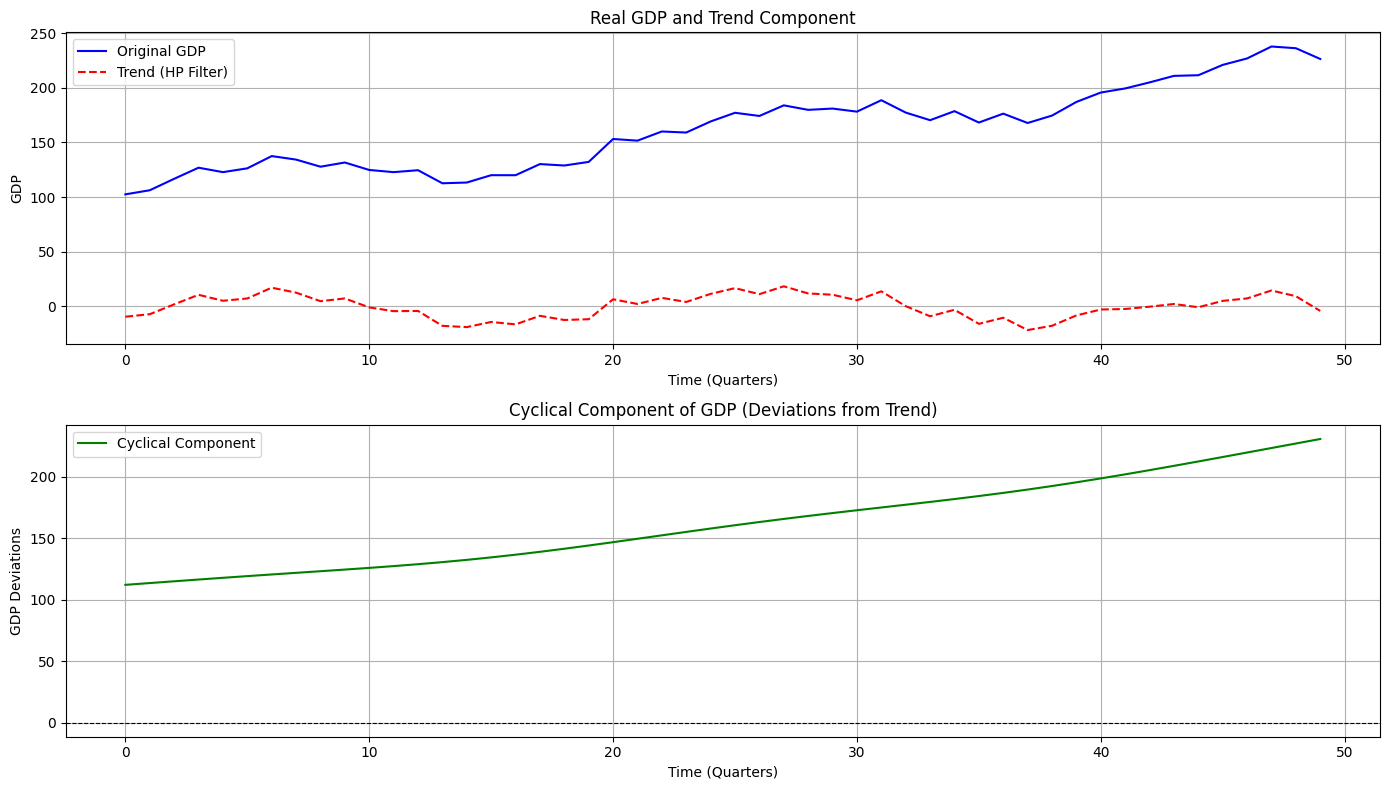Problem Statement: Business Cycle Analysis with Real GDP Data
Objective:
Analyze the business cycle by identifying and visualizing the cyclical components of Real GDP using the Hodrick-Prescott(HP)filter.
This method separates the trend and cyclical components of GDP, allowing us to examine deviations from the long-term trend.
Steps:
Data:
Use simulated or publicly available Real GDP time series data.Hodrick-Prescott Filter:
- Decompose GDP into its trend (Tt) and cyclical (Ct) components:
GDPt=Tt+Ct - The HPfilter minimizes the following loss function:
∑t(GDPt−Tt)2+λ∑t[(Tt+1−Tt)−(Tt−Tt−1)]2
where (λ) is a smoothing parameter (typically 1600 for quarterly data).
- Decompose GDP into its trend (Tt) and cyclical (Ct) components:
Visualize:
Plot the original GDP, trend, and cyclical components to analyze economic fluctuations.
Python Code
1 | import numpy as np |
Explanation of the Code
Simulated GDP Data:
- Real GDP is modeled as a combination of a long-term trend, a cyclical fluctuation, and random noise.
Hodrick-Prescott Filter:
- The HPfilter separates the GDP into a smooth trend and short-term deviations (cyclical component).
- The smoothing parameter (λ) controls the smoothness of the trend; 1600 is standard for quarterly data.
Visualization:
- The first plot shows the original GDP and its trend.
- The second plot highlights the cyclical component, indicating deviations from the long-term trend.
Results
Original GDP Mean: 161.77 Trend Component Mean: 0.00 Cyclical Component Mean: 161.77 (should be ~0)
Trend Component:
- Represents the long-term economic growth path.
Cyclical Component:
- Indicates business cycle fluctuations around the trend.
- Peaks and troughs correspond to economic expansions and contractions, respectively.
Insights:
- The cyclical component helps identify recessions and booms.
- Policymakers and economists use this analysis to design countercyclical measures.
